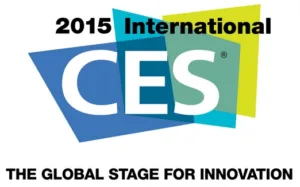Phew!!! Last year, I thought our CES report was comprehensive – it ran to 48 pages. However, this year, the report has swollen to 80 pages as we have boosted our coverage of a number of new areas, including VR headsets and augmented reality eyewear. Thanks to all the team for their efforts in getting the news out in the newsletter and on the website. We are in the process of adding all our subscribers to the private part of the website – it should be done soon.
Coming to the end of the process of reading and editing all of the issue, I have a slightly different view of the balance of the show than I had by walking the floor.
TV is really interesting. The TV business is desperately pursuing the “More pixels, better pixels, faster pixels” mantra that we talked about so much during and after IFA. Everybody was showing compelling wide colour gamut and high dynamic range sets, the chip makers are ready to go to silicon, but everybody needs some standards. At the moment, it’s not clear how content will be delivered and which technologies will be the winners.
I’ve talked before about the change from the display business being a limit on the broadcast industry, to displays moving ahead of broadcast, and at “digital” speed. That is causing a lot of strain in the content industries, whether TV or Hollywood. These industries are used to moving slowly. The reality, of course, is that if those industries don’t keep up, they will be by-passed by Netflix and other OTT providers.
Much technology proceeds in an exponential way and we humans have real trouble thinking in this way (I liked the Intel CPU vs cars analogy we reported from the CES keynote. Since Moore’s Law was set down fifty years ago, if cars had developed the same as chips, cars would do 3 million miles per gallon, go 200,000mph and cost 4 US cents!)
Now, the nature of exponential curves is that not much happens for quite a long time, then a lot happens (crudely). So change is slower in the short term than some of us expect, and then is more rapid than we expect.
Looking around, it seems to me that streaming/OTT video is coming to a point where it is going to start changing fast, after a long period of changing more slowly than may expected. We know from the switch from SD to HD, that competition in the broadcast business can drive technology adoption and I get the feeling that the positive response by Netflix and others to HDR and WCG will drive the broadcast and packaged media industries to adopt better video technology.
The “tipping point” from slow change to fast change could be the announcement at CES that Sling TV, a division of Dish, will provide ESPN, ESPN2 and Disney on a paid basis could prove critical. Pay TV is the key to development in broadcast TV and sport is the “killer app” for sports. I do have concerns about performance for sport on TV – I have really good broadband, but a test of the very easy to use Roku product that I did last week showed image quality that I wouldn’t be happy with for live sport. However, bandwidth is increasing on that exponential track. “Good enough” quickly becomes “very good”.
So, I think CES 2015 will be a significant moment, when OTT video went from slow progress to fast.
Finally, apologies for the late production this week, we expect to get back on track now that the CES report is done.
Bob

